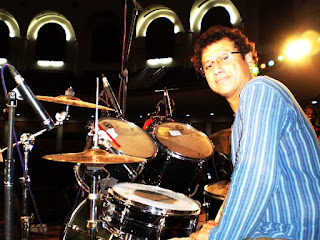“We ought to have met, in another time, in pursuit of attainable dreams, below a different sky,
Upon a different earth, we ought to have met then, there.”
Parveen Shakir
Parveen Shakir
Today marks the sixteenth death anniversary of a great poetess of Pakistan. Even after sixteen years of her death, her poetical works remain unmatched. As a prolific poet, she started writing at a very young age. The first volume of her poetry “Khushbu” got great critical acclamation in 1970s. The other volumes of her poetry, “Sad-e-Barg”, “Inkaar”, “Khud Kilami” and “Kaif-e Aaaina” were also equally popular. Besides her poetical works, “Gosha-e-chashm” (compilation of her newspaper columns) was also acclaimed. The work “Mah-e-tamam” forms a compilation of her all poetical works.
Her poetry primarily draws deep influences from Ahmad Nadeem Qasmi. She used to call him “Ammujan” and the first collection “Khushbu” is dedicated to him. Also, the opening poem titled “Sar-e-Shaakh-e-gul” of “Khushbu” is also written on him. Parveen is also the first poetess to use English titles for Urdu poems. Her poems “Ecstasy”, “Prism”, “Catharsis”, and “Duty” have English titles.
Parveen had her own style and diction that remains matchless with any other poet of Pakistan. Ghazal and freestyle are the only two forms of poetry that she used. Her poetical works mainly reflect the themes of love, gender discrimination, social injustice, feminism, social stigmas and romanticism. Apart from being a romanticist, her works reflect the tranquil concepts of love, beauty and contradiction, along with usage of metaphors and embodiments. She was also the first poet to use a term “Larki” in her works.
“Gaye janam ki sada” from her first work “Khushbu”, are a few lines……..
“Woh ek larki………
Ke jis se shayad mein ek pal bhi nahi mili hun………
Mein uskey chehre ko janti hun k uska chehra…………..
There is another poem “Muqaddar” where she writes……..
“Mein wo larki hoon jis ko pehli raat……..
Koi ghoonghat utha key yeh kehdey………”
This unique style of using feminine language is seen rare in the world of a male-dominated Urdu poetry, where a girl is openly talking about something she feels or something that touches her. This gives the most elegant female touch to her work. After Fahmida Riaz, Parveen was obviously the next Urdu poetess to bring out and sketch an influential feminine voice that was both exigent and engaging to a male dominated society. This was the area where she created her own forte. As compared to her ghazals, her freestyle work is more about social matters and taboos like gender inequality, gender unfairness, nationalism, sham, prostitution, human psyche and current affairs.
She is one of those Urdu poets whose works have impressed everyone through her thematic and pragmatic poetry. Her works simply add a new facet to the customary theme of love by presenting it in a simpler yet more transparent style and by using a multiplicity of words and metaphors to express different thoughts with varying intensities. Her works truly define the susceptibility of several generations and reflect an in-separation of poetry and tragedy. The very deep romanticism that radiantly runs in her works shows a subterranean and colossal refinement with an amalgamated melody.
Her poetry has also been sung and composed by many singers and musicians. Tassawar Khanum beautifully sang her poem “Tooti he meri neend magar…..”. Famous band Vital Signs sang her poem “Chehra” in different versions. Tina Sani sang her “Sundar Komal Sapno ki..” Mehdi Hasan sang “Koo ba koo phel gai” from collection “Khushbu” in 1982. Habib Wali sang “Gori karat Singhaar” from her collection “Khushbu”, later which was performed by Jawad Ahmed as well.
Her first book “Khushbu” won Pakistan's Adamjee Award and she was later awarded Pride of Performance. She left us on 26th of December 1994 in a car accident.
If he be scent, let him not touch me
and pass, until he be part of my existence.
The flower half-opened its lips,
I shall cleanse his lashes with my shawl
So the dust of this day's journey,
May not enter tomorrow's!





















